Supawood has been market leaders in the supply of bespoke sound absorptive linings for over 20 years now, starting with SUPACOUSTIC and now a full range of reverberation control options across every lining type conceivable.
However, there are situations where more sound absorption is not a good thing. This applies to performance spaces where music will be performed, as well as music practice rooms or similar.
Sound reflection, diffusion, and scattering play vital roles in creating an immersive and balanced audio experience.
In this blog we’ll explain what the concepts are, how they are used, and how Supawood has and can supply linings for these requirements.
Supawood strongly recommends using the services of a qualified acoustic consultant for these mission critical spaces.
What's the difference between reflection, diffusion and scattering?
Reflection
Reflection is when panels are designed to bounce the sound off the surface. When ‘reflector panels’ are discussed in acoustic reports this typically refers to those designed to reflect sound in a single specific direction. This is especially useful for lecture theatres and performing arts venues to direct a speaker or performer’s sound towards the audience. This reduces the need for amplification and helps to ensure the audience hears the sound coming from where it ‘should’.
Scattering
Scattering involves redirecting sound waves in various directions. It aims to ensure a more even distribution of sound throughout the listening area. Scattering can be achieved through the use of irregular surfaces, for example, panels installed in angled directions such as pyramid shapes or triangles. The purpose of scattering is to disperse sound energy and create a more immersive and enveloping audio experience.
Diffusion
Diffusion refers to the process of evenly distributing sound waves in a given space. It involves breaking up direct sound waves and scattering them in different directions, reducing the impact of standing waves and resonances. Diffusion helps create a sense of spaciousness and improves the overall listening experience. Diffusion is often achieved using convex curved surfaces or diffuser panels strategically placed around the room.
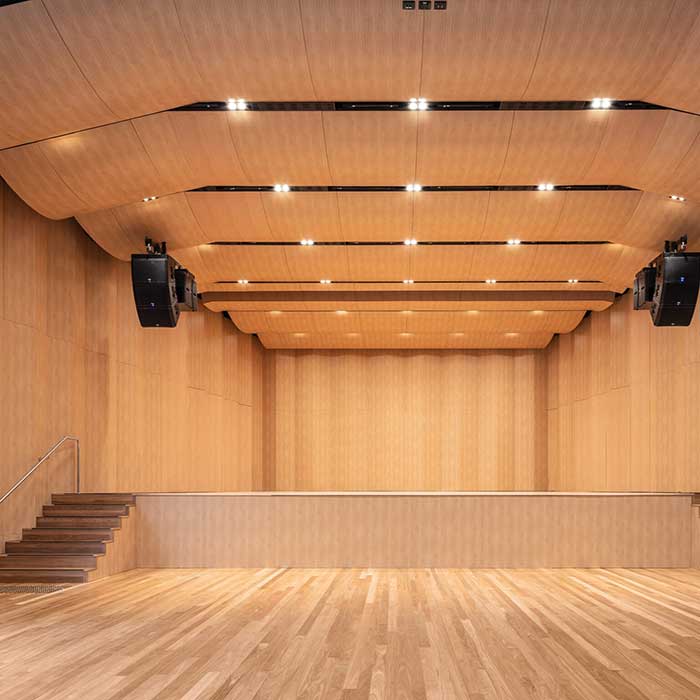
Bowral Memorial Hall: Curved ceiling panels provide diffusion. Angled wall panels provide scattering
How can they be achieved?
Reflector panels
These are simple to produce and specify as all of Supawood’s SUPALINE panels will act as reflector panels when installed in the correct place and inclination. In critical applications the standard 12mm or 13mm panel thickness can be increased to 25mm or 33mm to provide greater mass as some lower frequencies can be absorbed by vibration of the panel itself instead of being reflected as intended.
Scattering panels
Panels used for scattering are essentially reflector panels installed at specific angles, and require special framing. Supawood has several systems to simplify the installation; for instance, Supacoustic NCK ‘Sawtooth’ panels come with a framing kit to create an angled position.
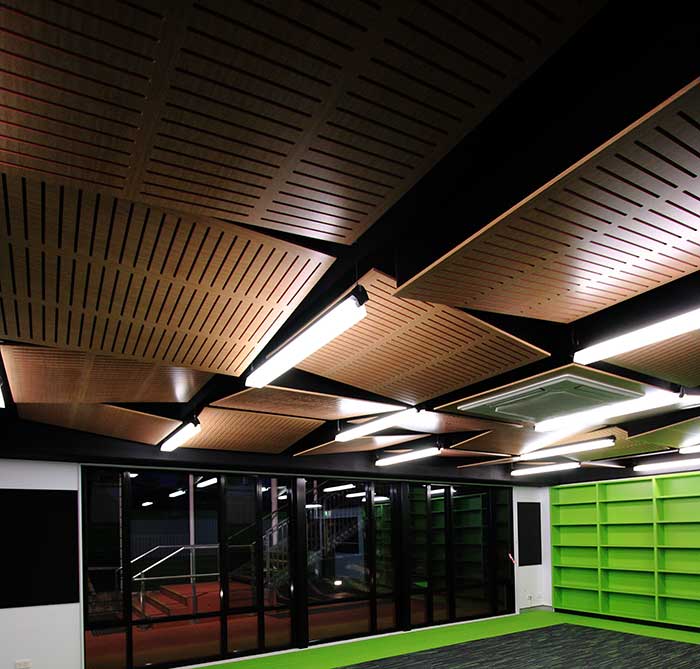
Tamborine Mountain: SUPACOUSTIC NCK Sawtooth panels for scattering and absorption
Supawood can preassemble framing units for easy installation, which ensure the panels fit the framing perfectly. Alternatively, Supawood can supply shaped framing ribs as a flat pack kit for installation onsite
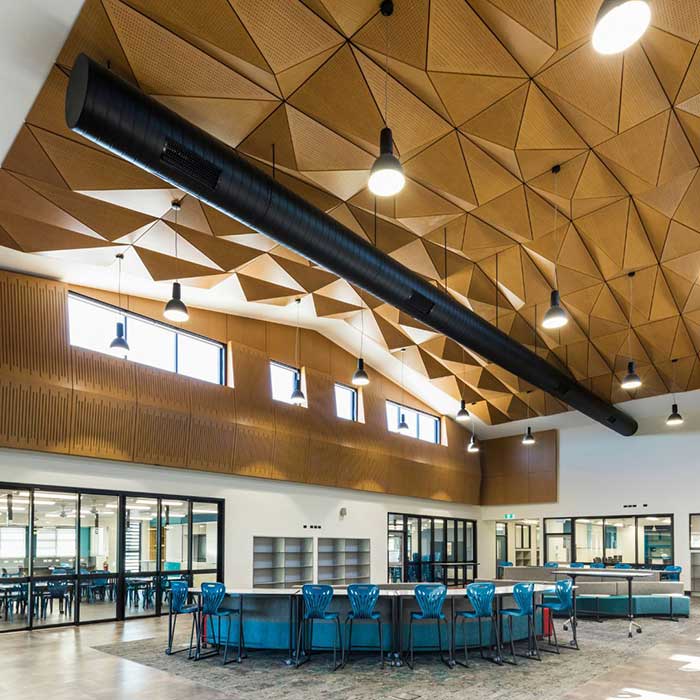
Redlynch State College: Flat-pack framing supplied with panels
Supawood can supply modules with angled panels, preassembled to a frame ready to install.
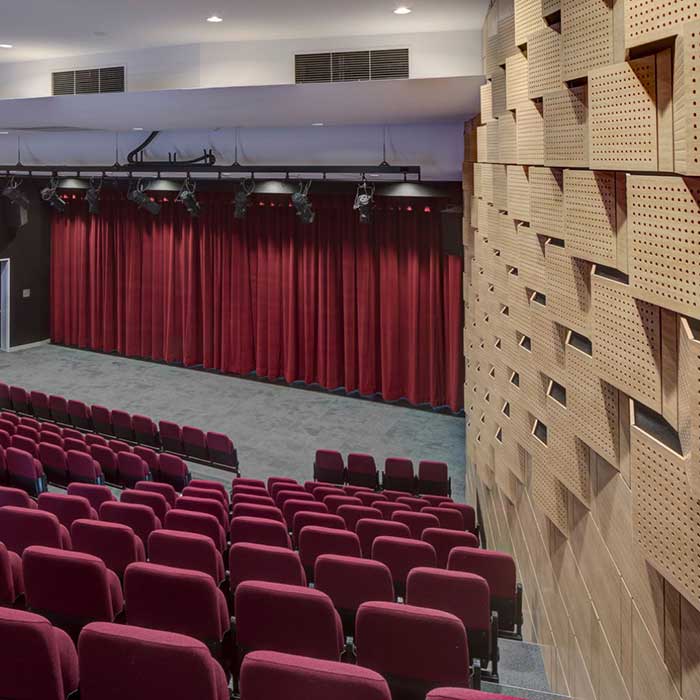
Chevalier College Performing Arts Centre: Preassembled framing supplied ready for installation
Diffusion panels
Convex curved panels will diffuse sound. Supawood can supply these as preassembled panels with the frame included ready to lift and fix into place (e.g., the Bowral Memorial Hall ceiling).
Please note: Concave curved panels will also diffuse sound but can focus sound causing acoustic anomalies, and hence should only be used when the radius is very small or the focal point is high in the air.
Domed slats or battens will diffuse sound in a similar manner.
Slats of varying sizes and gaps fixed to a reflective board will also diffuse sound (each specific size gap between slats diffuses a specific frequency, so these will often have many different size slats and gaps. For instance, observe the wall panels around the stage at the Canberra Grammar School Snow Concert Hall & Music Centre.
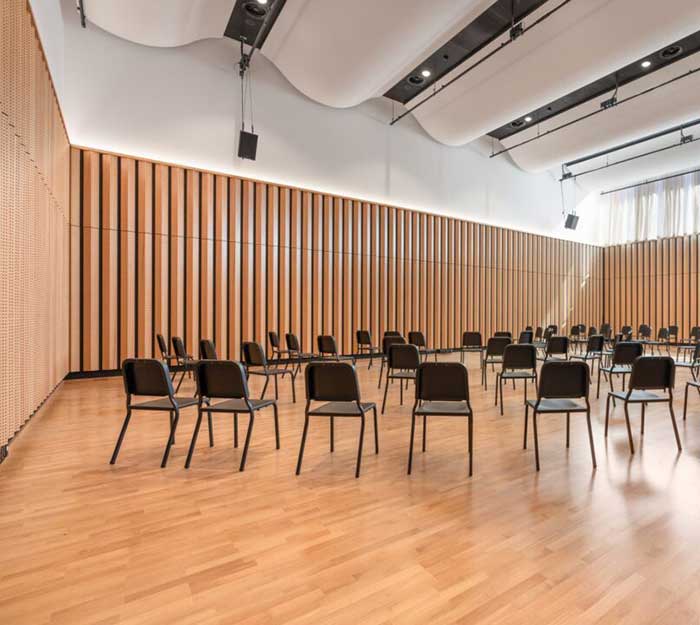
Canberra Grammar School Orchestral Room: Preassembled triangular panels for scattering
Panels with irregular surfaces will also diffuse sound. A particularly interesting example is the Glasshouse Performing Arts Centre in Port Macquarie. Here, Supawood supplied panels with a custom laser-cut perforation pattern inspired by a musical score. On some panels these perforations have acoustic textile backing and insulation, resulting in an acoustic absorptive panel. On others, the backing is another solid panel, which results in a reflective panel whose indentations create a diffusive scattering effect. There are also panels, which are twisted and have additional timber add-ons to increase the diffusion and scattering effects.
How they work together
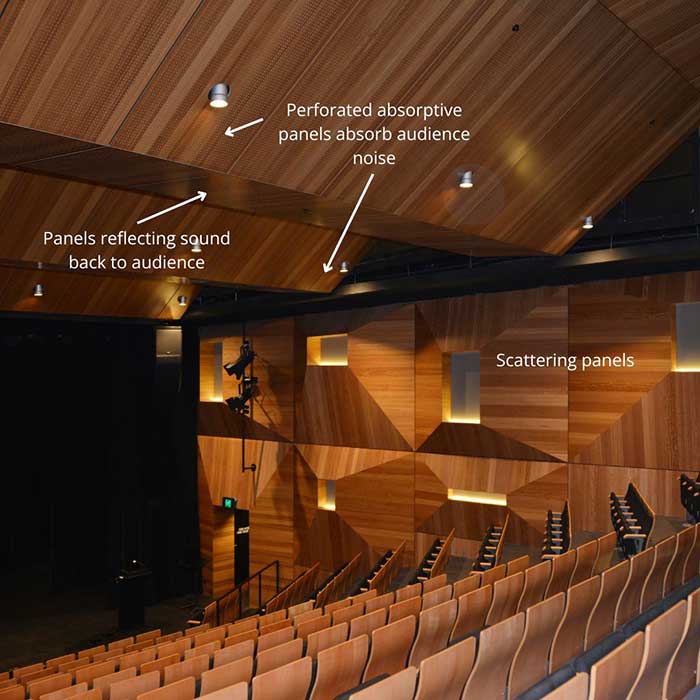
Monte Sant’ Angelo Mercy College Theatre
Supawood has helped produce many world-class performing arts venues over the years and typically there is a combination of absorptive, reflective and diffusive or scattering panels used together.
We know it’s not always easy to find a solution that will make your project stand out as distinctive and satisfy your client and the acoustic performance requirements of the design. That's why we customise a large range of ceiling and wall systems to your specifications.
If you're ready to see your vision come to life in the way you want, get started by scheduling a free design call with our team.

